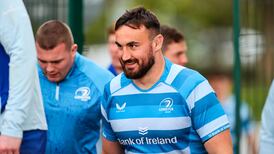Backrow balance was crucial to end game
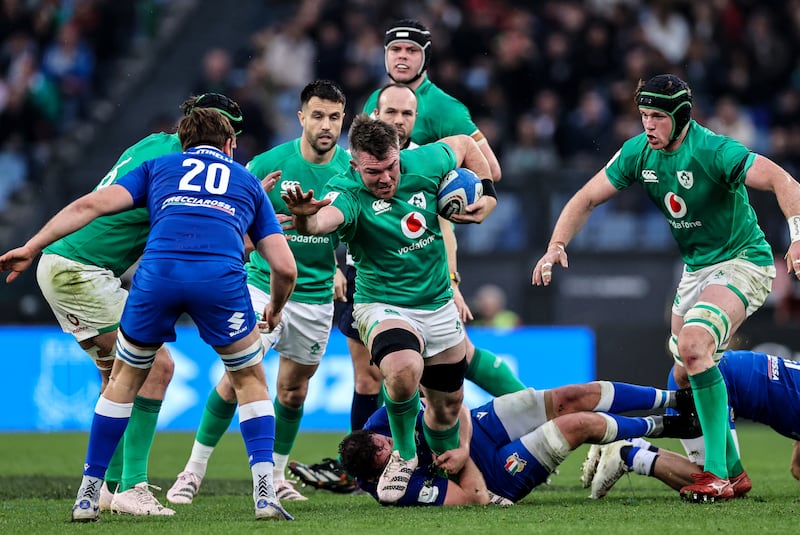
There was more of a natural balance to the Ireland team that finished the match than the one that started in the victory over Italy at the Stadio Olimpico. The timing of head coach Andy Farrell’s changes and the material impact ensured that the visitors were better calibrated and more dynamic than their hosts in the fraught end game.
An obvious example was the reshuffle in the backrow when Peter O’Mahony was summoned from the bench to play blindside flanker, thereby restoring Caelan Doris to his natural position of number eight. It had an immediate impact, Doris became a principal figure in attack, as evidenced in his dummy pass and yardage gain for Mack Hansen’s try.
O’Mahony freed Doris to play on instinct and the net effect was a backrow more naturally aligned to their disparate strengths.
Ireland’s squad getting deeper
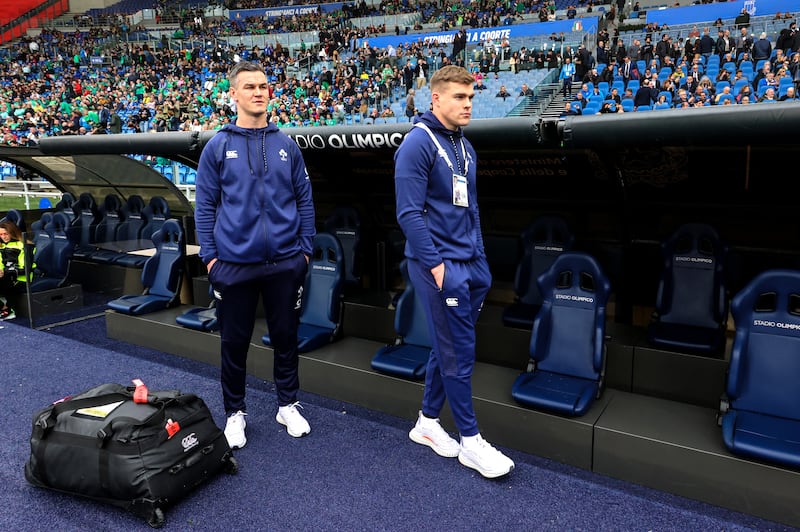
The Ireland coaching staff don’t like to talk about the World Cup while they are focused on winning the Six Nations Championship, an understandable sentiment. But it is possible to draw a couple of parallels that will be heartening with an eye on the global tournament in France later in the year.
UL Bohemian duo Aoife Corey and Jane Clohessy in line for first Ireland caps against Scotland
Should the 7-1 split be outlawed?
Erin King injury casts shadow over Ireland’s Six Nations preparations
‘Ulster will be a huge test’: Leinster’s Tommy O’Brien on Saturday’s URC match and his international hopes
Farrell has already declared there will be injuries to his team in France and what will have given the group confidence is that a team missing frontliners, captain Johnny Sexton, Garry Ringrose, Tadhg Furlong, Tadhg Beirne, Jamison Gibson-Park, Robbie Henshaw and Cian Healy went to Rome and returned with a third successive victory against an ever-improving Italy.
An upside of Ireland’s injury pile-up is Farrell has received a proper look at squad depth and been able to see what works and doesn’t; positionally too.
Keenan rock solid yet again
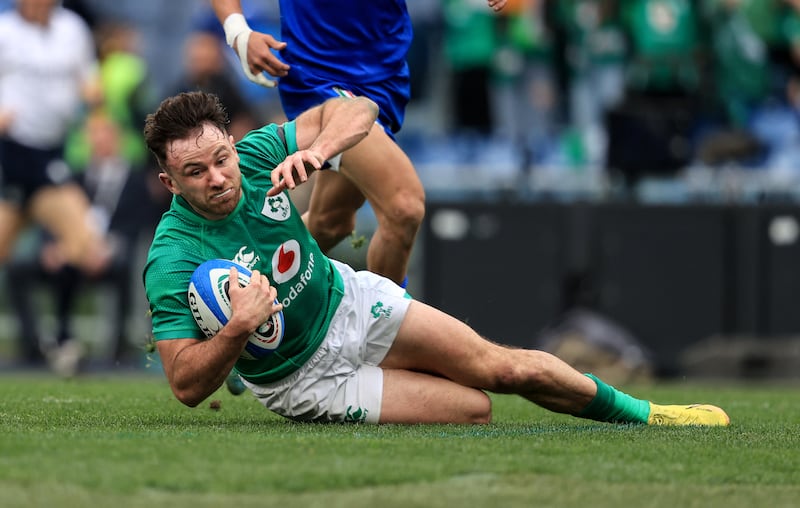
Hugo Keenan had perhaps a little less to do in an overt way compared to the previous two matches in the tournament but nevertheless he discharged his duties with an unfussy elegance. The obvious starting point is to use the example of the try he scored.
When he received the pass from Bundee Aki, there was still plenty to do as Italy had a surfeit of defenders, but the Irish fullback stepped off his left foot, finding a chink of daylight as two defenders collided trying to collar him, offered a hint that he may pass, only to pirouette out of a final despairing grab and accelerate under the posts.
If that was the high watermark, the way he covered the pitch in the backfield, his kick chase and one-on-one tackling – he was one of the few to nail Ange Capuozzo in open play – was equally impressive.
Ringrose’s influence marked in his absence
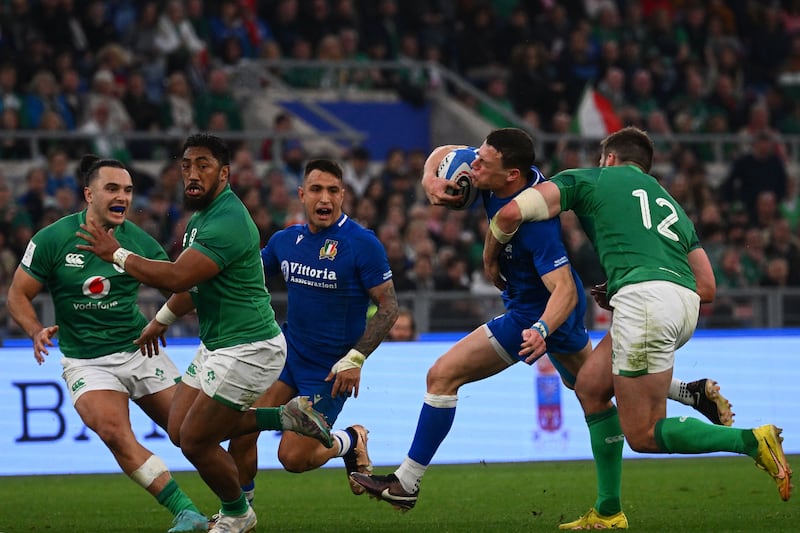
Garry Ringrose’s standing rose in absentia as the locals might say. It’s not that Ireland’s first choice in the number 13 jersey is underappreciated but the disconnect in Ireland’s defensive alignment, especially in the first half, was worrying. It is arguably the most difficult area of the pitch to defend and requires not only a steady nerve but being able to read the game and make snap decisions.
Ringrose has matured into that role and there are few if any better in world rugby at this time. He offers both a comforting presence to his wings James Lowe and Mack Hansen and has their trust so that they don’t feel compelled to gamble too often and rush out of the line.
Bundee Aki was cast in an unfamiliar role coming off the back of limited game time, but it wasn’t just down to him and Stuart McCloskey for the defence issues in midfield, as others failed to take away the space and time and the unit cohesion broke down.
O’Toole steps up
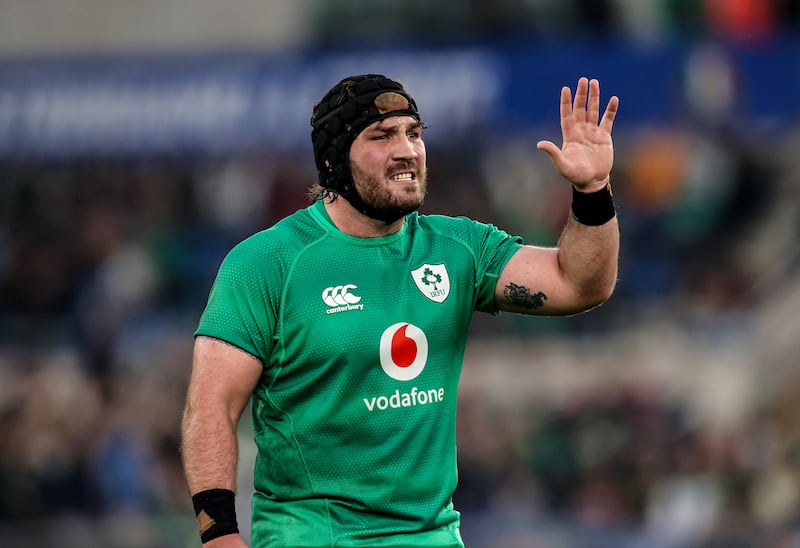
A word for Tom O’Toole. The 24-year-old Drogheda-born, Ulster tighthead prop helped to win two scrum penalties – I’m using the technical term helped because I’m not sure who did what to whom in those scrums – after his arrival on the pitch following an unfortunate knee injury for Finlay Bealham.
O’Toole’s work rate and tackling have always been a high-level feature of his armoury, but he’s gone away and improved a couple of areas in his game that needed work, the scrum and his carrying game, the latter very impressive in his contribution to the win over France.
Tadhg Furlong is expected to be fit for the Scotland match and if Bealham’s knee doesn’t recover in time then O’Toole will get a chance to build further on that development. Scotland’s scrum is good and that will offer another level in the benchmarking process.






